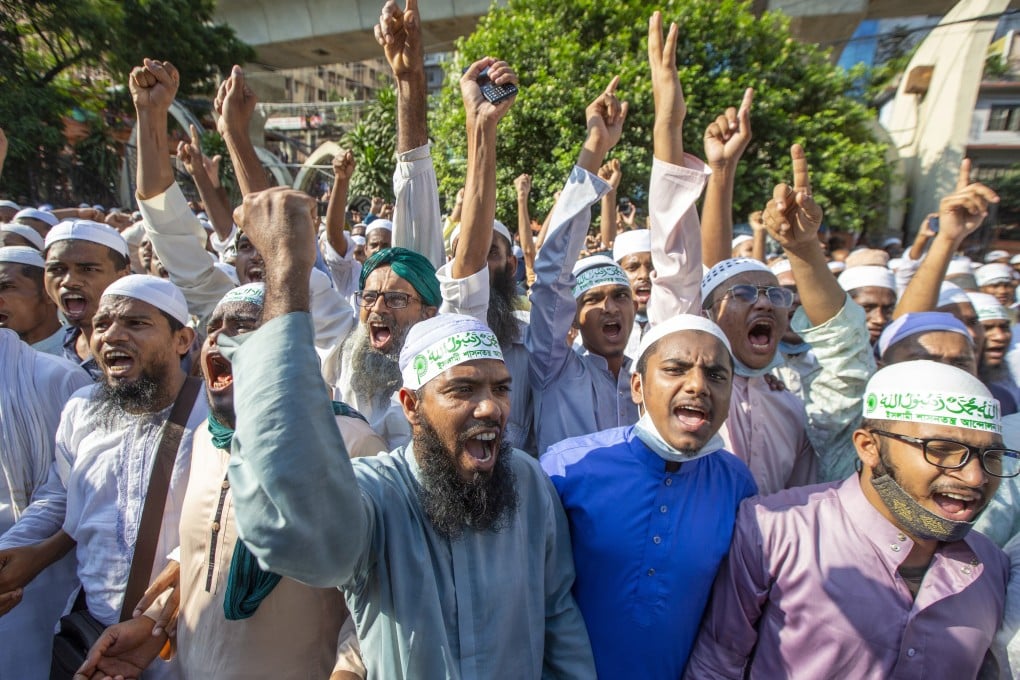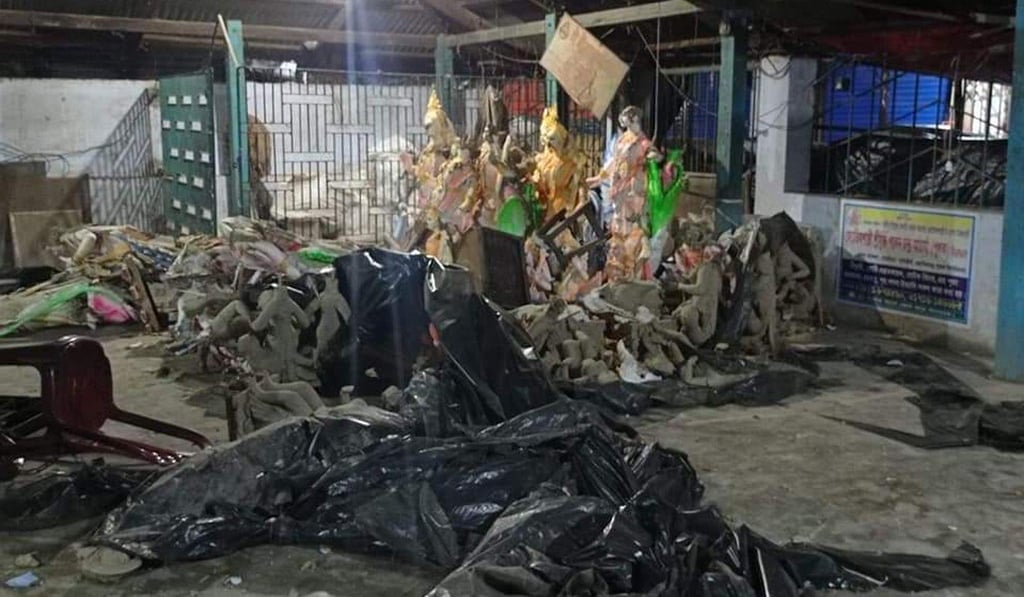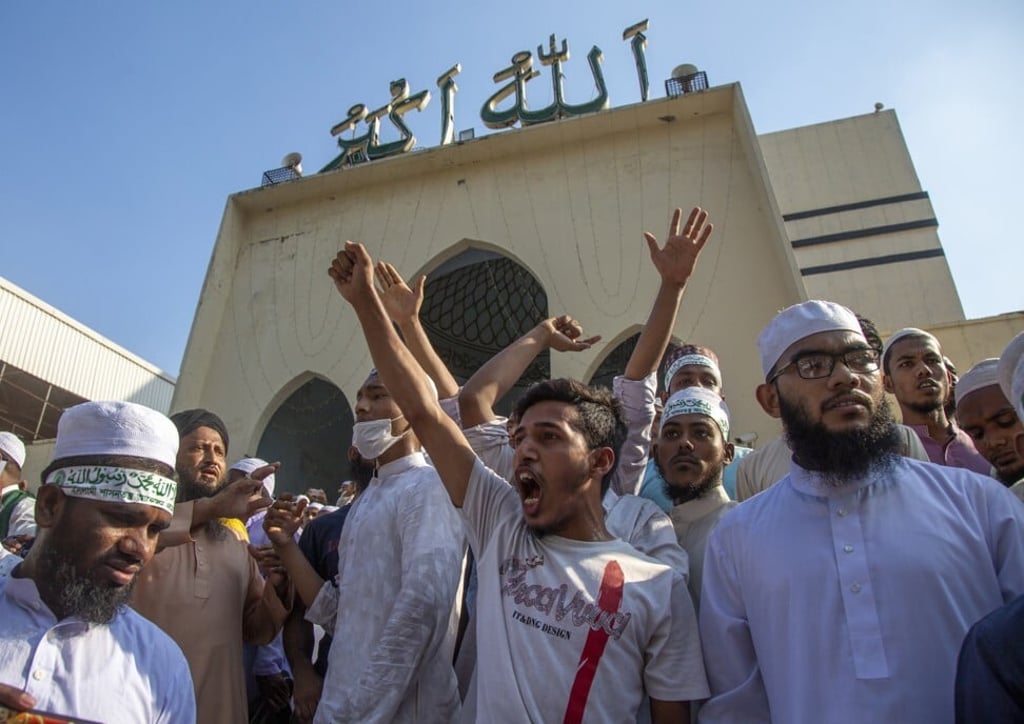Advertisement
Explainer | Why did Muslim hardliners attack Hindus in Bangladesh’s worst bout of communal violence in two decades?
- A social media post showing the Koran at the feet of a Hindu god inflamed tensions in the Muslim-majority nation, with elite officers called in to restore order
- PM Sheikh Hasina has vowed to revert to a 1972 secular constitution, but hasn’t been able to amid party differences and fears that a backlash against Hindus could hurt ties with India
Reading Time:3 minutes
Why you can trust SCMP

Muslim-majority Bangladesh in October witnessed one of the worst bouts of communal violence in the last two decades, leaving six people – both Muslims and Hindus – dead and hundreds of homes and temples belonging to the minority Hindus destroyed.
Prime Minister Sheikh Hasina’s Awami League government had to deploy border guards and units of the elite Rapid Action Battalion in 22 of the country’s 40 districts to bring the situation under control. Here’s a look at what happened.
What caused the violence?
On October 12, the first day of Durga Puja, the biggest festival of Bengali Hindus, a strange picture began circulating on social media.
Advertisement
It showed the Koran, Islam’s holy book, at the feet of a Hindu god in the eastern town of Comilla. Scores of Muslims, some said to be close to Islamist groups, started protesting against the “insult to Islam” on Facebook.
Police claim to have arrested two Muslims for mischief with the avowed intention of starting communal disturbances.
Advertisement

Advertisement
Select Voice
Choose your listening speed
Get through articles 2x faster
1.25x
250 WPM
Slow
Average
Fast
1.25x
